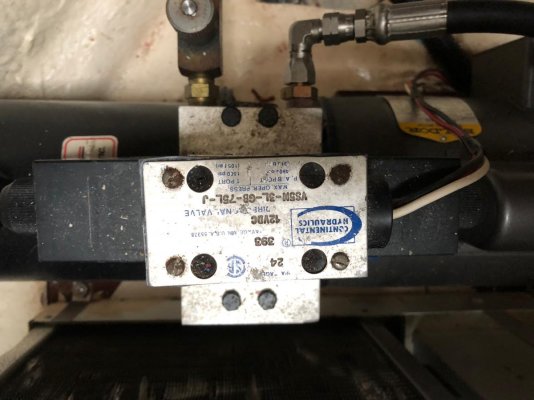RickyD
Guru
- Joined
- May 4, 2018
- Messages
- 729
- Location
- United States
- Vessel Name
- Aquarius
- Vessel Make
- Californian 55 CPMY
I'm sure this will be a very easy question for many. My Davit is hydraulic and I have a mild hydraulic leak around the pump. I first detected it a few weeks ago and was unable to tell exactly where it was coming from. I put a couple pads under it. I added fluid to the connected tank but was not sure how full I should make it. So how about 75%. A couple days ago I must have left the pump on after moving the davit to hold my rocker stopper. I guess I was running the genset at the same time and couldn't hear it. When I went to turn it on to bring it all aboard, the pump was on at the panel but not running. I checked it and it was not hot but I was not sure how long it ran before shutting down. There had been some additional leaking. Hard to tell with a flashlight down a little hole how much fluid was left but it was not dry. Maybe 25-50%. Turning the panel davit switch on and off did nothing. I opened the big breaker switch that handles the davit and my windlass and let it rest. Later, I turned it all on and presto back in business. So, I get to home port and even with the pump having been shut off at the panel while still running but the windlass breaker still active, the pump would not come on. I opened the windlass breaker and left the boat with plans to return tomorrow. So I ask, is the possible problem not enough fluid in the tank? But then again, the pump did not shut down, I shut it down last time. Could there have been a thermal overload situation and now the thermal overload switch is getting balky? Any ideas? As I recall this is a Baldor pump and reservoir with a Continental Hydraulics valve.
Last edited:

